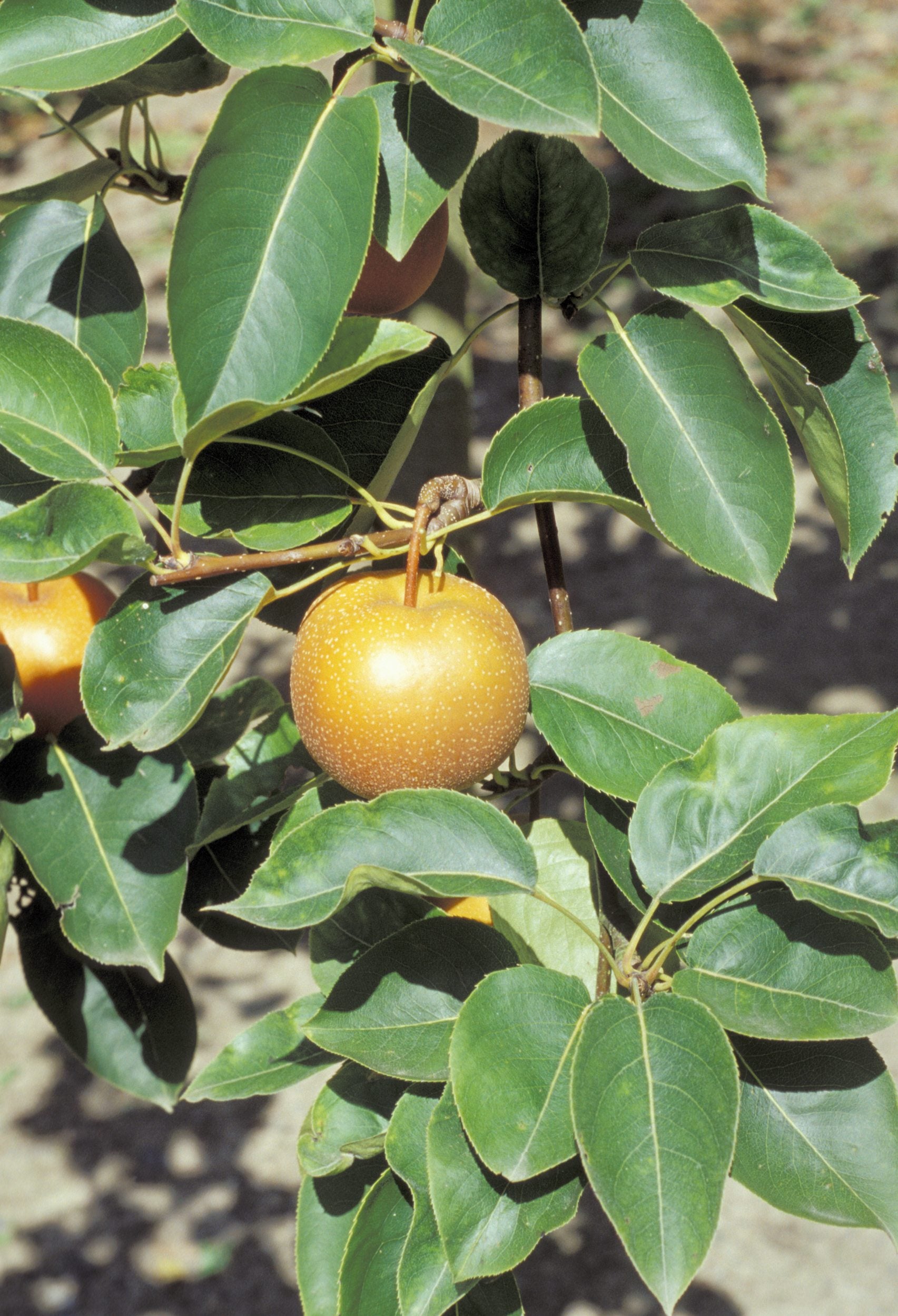
Available for some time in the Pacific Northwest at the local grocers or farmer’s market, the fruit of Asian pear trees is enjoying a boost in popularity throughout the country. With a delicious pear flavor but a firm apple texture, growing your own Asian pears is becoming a popular option for those with a home orchard. So how do you grow an Asian pear tree and what other pertinent Asian pear tree care can aid the home grower? Read on to learn more.
Info about Growing Asian Pear Trees
Asian pears are also called more specifically Chinese, Japanese, Oriental and apple pears. Asian pears (Pyrus serotina) are sweet and juicy like a pear and crunchy much like an apple. They can be grown in USDA zones 5-9. Trees are not self-pollinating, so you will need another tree to aid in pollination. Some cultivars are cross-incompatible, meaning that they will not pollinate each other. Check to be sure the varieties that you are purchasing will cross pollinate. The two trees should be planted 50-100 feet (15-30 m.) for optimal pollination. Fruit is allowed to ripen on the tree, unlike the European pear varieties, which are plucked from the tree when still green and then allowed to ripen at room temp.
How to Grow an Asian Pear Tree
There are a number of Asian pear varieties to choose from, many of which are dwarf cultivars that only attain heights of between 8-15 feet (2.5-4.5 m.) in height. Some of the more popular varieties include Korean Giant, Shinko, Hosui, and Shinseiki. Trees should be planted at least 15 feet (4.5 m.) apart in a sunny area of the garden in compost rich soil. Plan to plant the trees in the spring. Dig a hole almost as deep and twice as wide as the tree’s rootball. Gently remove the tree from the container and loosen the roots lightly. Place the tree in the hole and backfill with soil. Water the new Asian pear well and surround the base of the tree (not up against the trunk) with a 2-inch (5 cm.) layer of mulch.
Asian Pear Tree Care
Caring for Asian pears is fairly simple once the saplings become established. In the first five years, be sure to keep the trees moist; water deeply each week if there is little rain. What does that mean exactly? When the soil is dry to a depth of 1-2 inches (2.5-5 cm.), water the tree. Irrigate with enough water to moisten the soil to the tree root ball depth. Established Asian pears should be watered when the soil is dry 2-3 inches (5-7 cm.) down. Established trees require around 100 gallons (378.5 L. )every 7-10 days during dry spells. Caring for Asian pears requires a little pruning as well. The goal is to train the tree with a modified central leader that will shape the tree like a stereotypical Christmas tree shape. Also, encourage branching angles on young trees by bending flexible limbs with clothespins or small spreaders. Caring for Asian pears also requires some judicious thinning. Thin the Asian pear fruit two times. First, when the tree is in bloom, simply remove about half of the flowers in each cluster. Thin again 14-40 days after the blossoms drop to encourage larger fruit to form. Using sterilized pruning shears, select the largest pear fruit in the cluster and prune out all the others. Continue to each cluster, removing all but the largest fruit. There is no need to fertilize a newly planted young Asian pear; wait a month and then give it ½ pound (0.2 kg.) of 10-10-10. If the tree is growing more than one foot per year, do not fertilize it. Nitrogen encourages growth, but over feeding can reduce fruiting and encourage diseases. If the tree is growing at a slower rate, go ahead and feed it with 1/3 to ½ cup (80-120 ml.) of 10-10-10 per each year of the tree’s age, up to 8 cups (1.89 L.) divided into two feedings. Apply the first portion in the spring prior to new growth and again when the tree begins fruiting. Sprinkle the fertilizer over the soil and water it in.
Sign up for the Gardening Know How newsletter today and receive a free copy of our e-book "How to Grow Delicious Tomatoes".

Amy Grant has been gardening for 30 years and writing for 15. A professional chef and caterer, Amy's area of expertise is culinary gardening.
